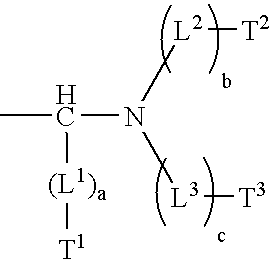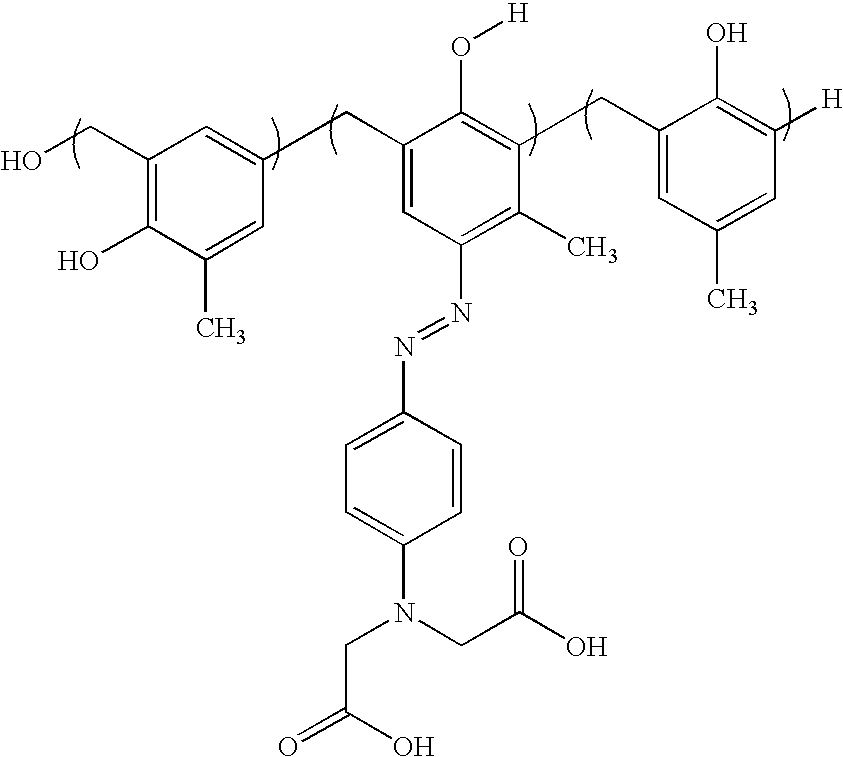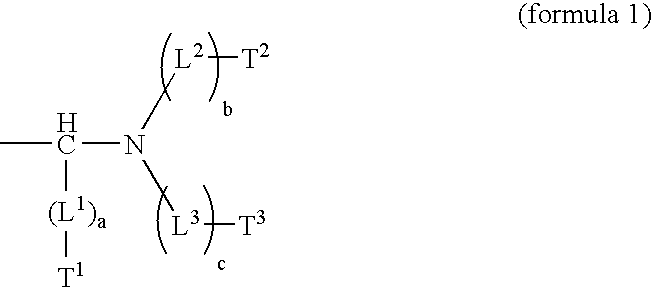Heat-sensitive lithographic printing plate precursor
a lithographic printing plate and heat-sensitive technology, applied in the direction of auxillary/base layers of photosensitive materials, instruments, photosensitive materials, etc., can solve the problems of reducing the solubility of the composition and the solubility change of the composition, and achieve the effect of improving the chemical resistance of the coating
- Summary
- Abstract
- Description
- Claims
- Application Information
AI Technical Summary
Benefits of technology
Problems solved by technology
Method used
Image
Examples
examples
Preparation of Polymer MP-01
A mixture of 76.5 g of POL-01 solution (40% by weight in Dowanol PM) was diluted with 100 ml Dowanol PM and 10 ml water and brought to 30° C. To this mixture was first added 4.275 g AM-01 (0.07 mol) over a period of 15 minutes and then 6 g of a solution of 35% by weight of Al-01 (0.07 mol) in water over a period of 30 minutes. During the addition the temperature rose to 35° C. The mixture was subsequently heated to 65° C. at which temperature it was stirred for 3 hours.
The mixture was then cooled to 30° C. and poored into 1.5 liters of water over a period of 30 minutes while continously stirring. Then, 100 ml acetic acid was added and the mixture was stirred for 2 hours. The precipitated polymer was finally isolated by filtration, washed with water and dried at 45° C.
Preparation of Polymer MP-02
The preparation of polymer MP-02 was carried out in the same way as that of polymer MP-01 with the exception that 7.5 g of AM-02 was used instead of AM-01. ...
example 4
demonstrates also an increased chemical resistance compared with the unmodified polymer, but the modification of polymer by AL-02 (i.e. propionaldehyde) and AM-03 is less favourable for the chemical resistance than the polymer modified by AL-01 (i.e. formaldehyde) and AM-03.
PUM
| Property | Measurement | Unit |
|---|---|---|
| wavelength range | aaaaa | aaaaa |
| wavelength range | aaaaa | aaaaa |
| hydrophilic | aaaaa | aaaaa |
Abstract
Description
Claims
Application Information
 Login to View More
Login to View More - R&D
- Intellectual Property
- Life Sciences
- Materials
- Tech Scout
- Unparalleled Data Quality
- Higher Quality Content
- 60% Fewer Hallucinations
Browse by: Latest US Patents, China's latest patents, Technical Efficacy Thesaurus, Application Domain, Technology Topic, Popular Technical Reports.
© 2025 PatSnap. All rights reserved.Legal|Privacy policy|Modern Slavery Act Transparency Statement|Sitemap|About US| Contact US: help@patsnap.com



